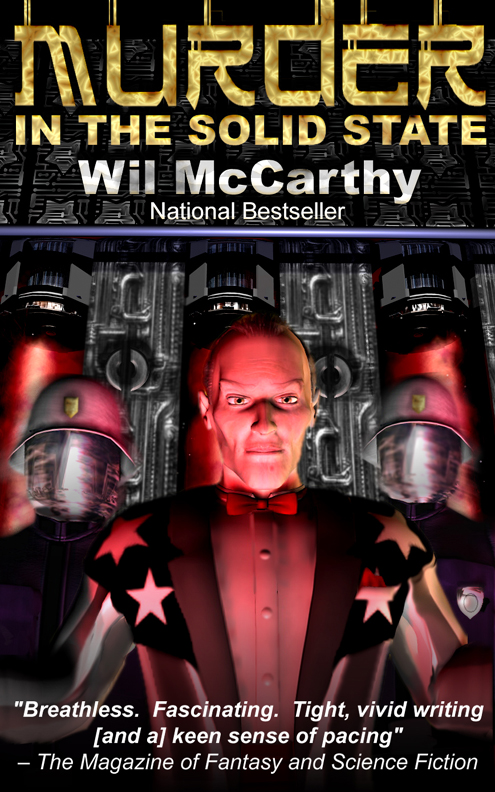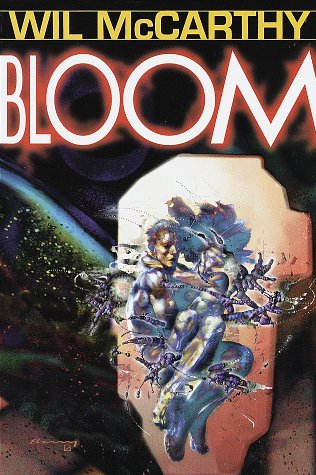During the 1990s, the idea of nanotechnology — molecule-sized machinery capable of manipulating matter at the atomic level — took the science fiction world by storm. However, many of the stories were overly optimistic, both in a technological sense and in terms of the reactions of human society. On the other side, the cyberpunk authors were twisting every imaginable technology to sordid or sinister purposes. Walking a line down the middle, I hypothesized a rather dark future in which the growing power of technology set off power struggles and assorted mishaps throughout the 21st century, culminating in a nanotech disaster which destroys the entire inner solar system.
Collectively, this series has earned a good deal of critical attention, both for its technical rigor and for the gloomy-yet-energetic tone of most of its stories. Murder in the Solid State was a Locus bestseller, and has remained in print for five years — a long time in today’s publishing world. Bloom was a New York Times Notable Book which appeared on a number of “year’s best” lists, including Locus, Borders, and Amazon.com. “Amerikano Hiaika” and Bloom have both been reprinted in various translations and overseas editions.
Stories, in chronological order of occurrence:
“Jarvick Hearts”: FUTURE NET (Daw, September 1996)
“Being the Drug”: Colorado Engineer, Spring 1987
Murder in the Solid State

“Amerikano Hiaika”: Aboriginal SF, May/June ’91; Interzone (UK), May 1991; Die Letzten Basionen (Deutschland: Wilhelm Heyne Verlag, Feb ’98)
Novel Proposal (never written): Bad Medicine
“No Job Too Small”: Aboriginal SF, Spring 2001
Bloom

GOODIES:
MPEG animation of the runaway nanotech replication event, or “bloom,” responsible for the formation of the Mycosystem. Courtesy of reader Chris Jeppsen.
As featured in Bloom: John Conway’s Game of Life, an early cellular automaton which demonstrates principles of artificial life and chaos theory. Java implementation by Alan Hensel.
It Takes a Rocket Scientist: Amazon.com Interviews Wil McCarthy
